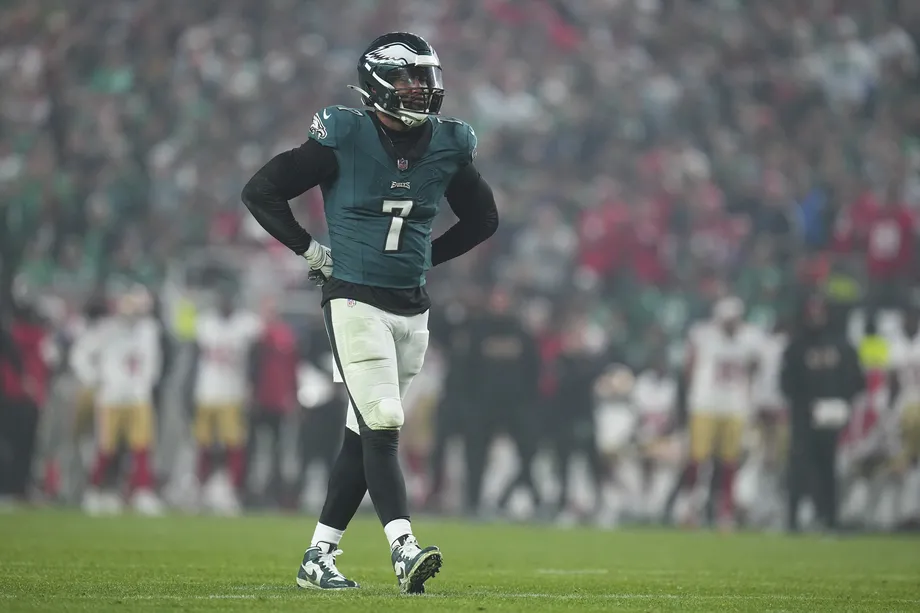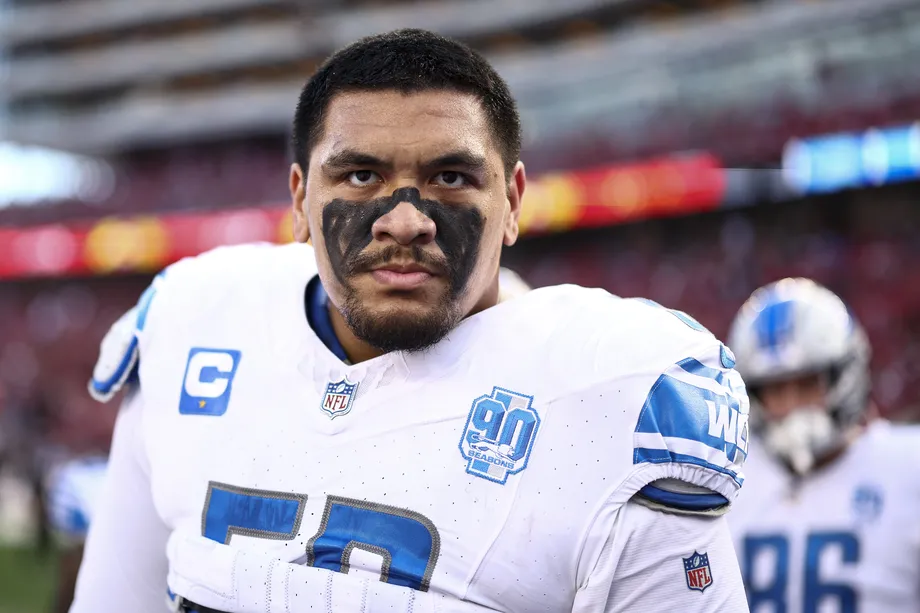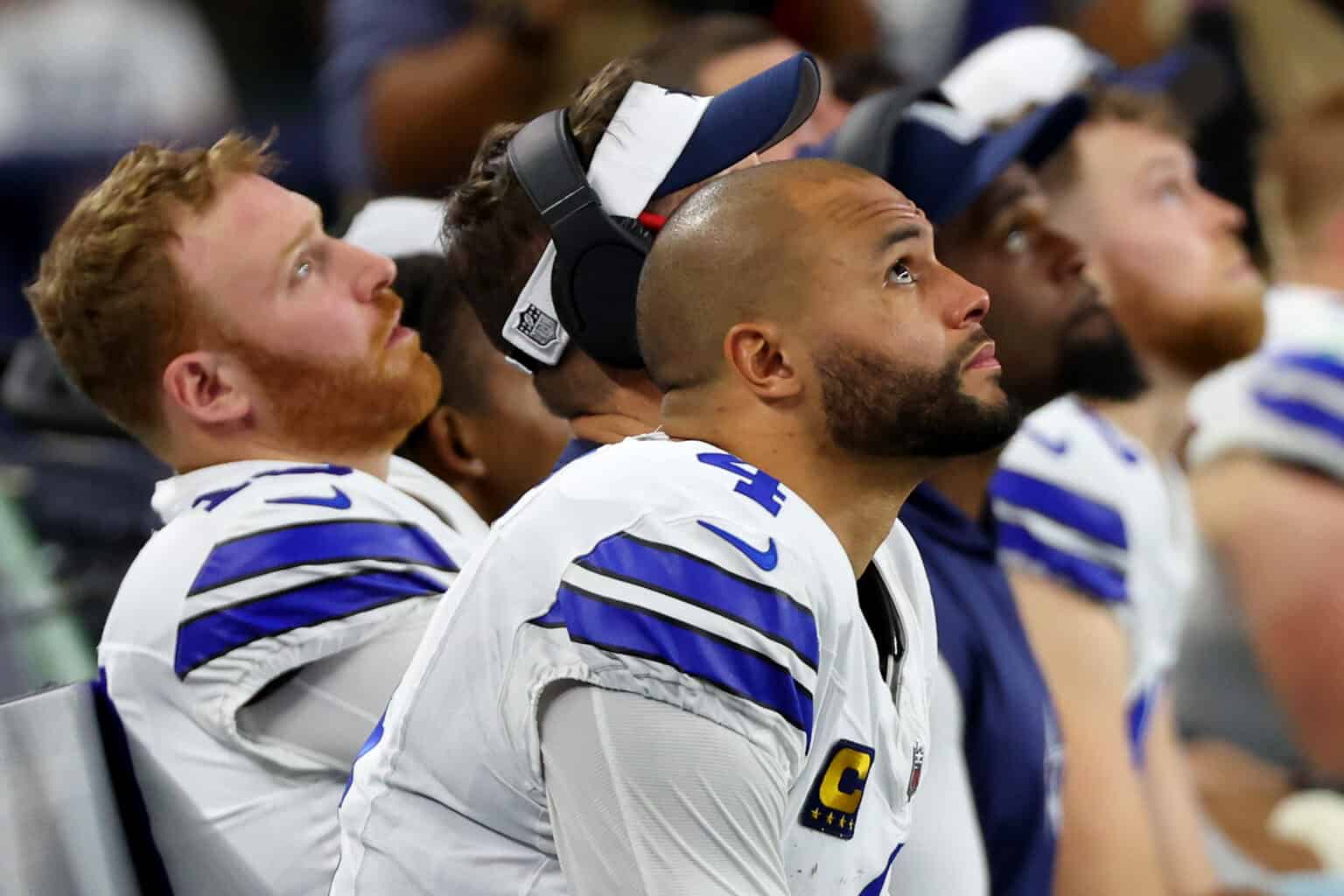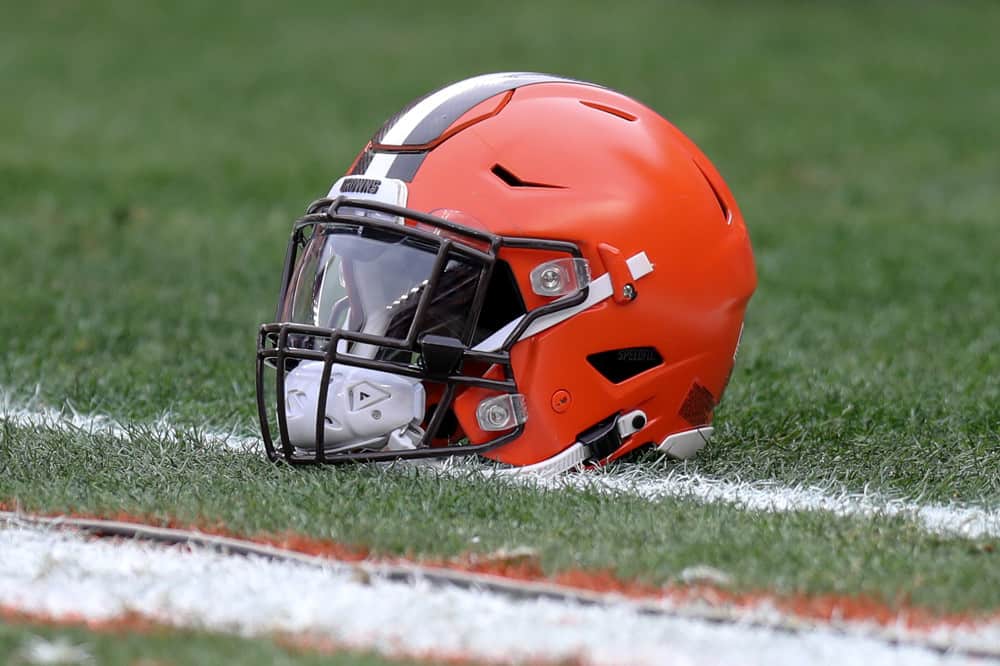The New York Jets must heed the formula that leads to playoff success
If the New York Jets want to find themselves preparing for a football game 365 days from now, they need to take note of what happened around the NFL this past weekend.
This is a copycat league. Other teams are laying out the blueprint for success. The teams that make the fastest jumps from zeroes to heroes are usually the ones who do the best job of mimicking what’s working for everyone else. The teams that get stuck in the mud are usually the ones who fail to adapt to leaguewide trends.
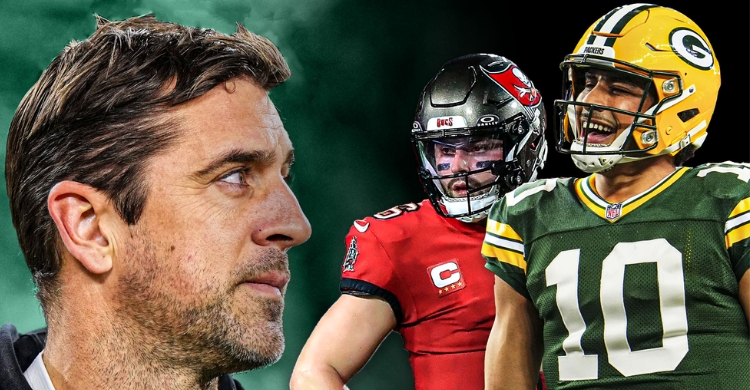
Above anything else, there is one major lesson New York must take away from Wild Card weekend.
The lesson: A quarterback cannot will a team to victory on his own
By no means is this a startling revelation, nor is it anything new in the NFL. Football has always worked this way. Nonetheless, it is a message that needs to be heard loud and clear by a Jets organization that seems to believe Aaron Rodgers will solve all of its problems. They will never admit they believe this, but their actions spell it out for you.
Looking at the six games that transpired this weekend, it wasn’t the better quarterback who won each game. It was the better supported quarterback who went 6-0.
Let’s run through each game and break down the differences in how the winning and losing quarterbacks were supported. This will help lay out a blueprint for what the support around Rodgers must look like if the Jets want to not only make the playoffs, but win games when they get there.
Green Bay over Dallas
Jordan Love was pressured on just 19% of his dropbacks (per NGS), the lowest of any quarterback on Wild Card weekend. For perspective, the 2023 NFL average was 35.9%. Furthermore, Love was never sacked and was backed up by a great performance from Aaron Jones out of the backfield, who ran 21 times for 118 yards and three touchdowns.
Green Bay also cooked up plenty of easy throws for Love. His “expected” completion percentage (per NGS, which is tracked based on factors such as pressure, target depth, and target separation) was 71.3%, second-highest of the weekend behind another winning quarterback in Jared Goff (72.3%).
Love attempted nine passes beyond the line of scrimmage in which there were 3+ yards of separation from the nearest defender when the ball arrived. On these throws, Love went 8-of-9 for a weekend-leading 194 yards and one touchdown. Love only dropped back 21 times all game, so it’s incredible that he threw nine of these passes. That means these throws made up 43% of his dropbacks – for perspective, the 2023 league average was 26%.
On the Dallas side, Dak Prescott was pressured on 30.4% of his dropbacks (more than 11% higher than Love’s rate) and sacked four times. His lead running back, Tony Pollard, ran for only 56 yards and one touchdown on 15 carries while failing to generate a play of more than 11 yards across 22 total touches.
Additionally, Prescott and the Cowboys offense continued a season-long trend of failing to dominate when they do not receive the benefit of takeaways from the defense.
In the regular season, Dallas went 0-4 and scored 17.3 points per game when the defense registered zero takeaways. That continued in this game as Green Bay never turned the ball over, putting maximum pressure on Prescott and thus exposing his inability to carry the team without extra help. The Cowboys started all of their drives in their own territory, with an average starting point of their own 19-yard line.
Meanwhile, Dallas gifted Green Bay with three offensive drives that started in Cowboys territory, and the Packers scored two touchdowns off those (the one where they didn’t score was a clock-eating drive late in the fourth quarter when they were up by 16).
Houston over Cleveland
Joe Flacco’s Linsanity run came to an end as the Browns finally didn’t create a cushy environment to make him look better than he is.
In Houston, Flacco was pressured on 40.4% of his dropbacks (fourth-highest of the weekend), sacked four times, and received little support from the run game (43 yards on 17 carries).
Another key factor was Cleveland’s No. 2-ranked defense (per DVOA) finally putting Flacco in catch-up mode for most of the game, which was a new challenge for him as a member of the Browns. Flacco dropped back a season-high 46 times when trailing. In his five regular season starts, Flacco averaged 19.0 passing plays when trailing per game. This number dipped to just 13.3 in his four wins.
Across the field, C.J. Stroud was pressured on 38.1% of his dropbacks, was never sacked, and received solid support from the run game (79 yards on 15 carries). Thanks to the defense’s strong outing, Stroud only had to run three passing plays while trailing.
We should also note that Houston’s receivers and offensive coordinator Bobby Slowik did a great job of creating easy completions for Stroud. The rookie completed seven passes for 144 yards and two touchdowns when targeting a receiver who had at least five yards of separation from the nearest defender when the ball arrived.
Kansas City over Miami
This was one of the weekend’s only two games that were won by the quarterback who took a lower pressure rate, as Patrick Mahomes was pressured on 34.9% of his dropbacks while Tua Tagovailoa’s mark was 29.5%. However, in most other areas, Kansas City supported its quarterback better than Miami.
Firstly, while Tagovailoa was pressured slightly less frequently, Miami had to rush the ball out to pull that off. Mahomes was holding the ball for much longer. Tagovailoa averaged 2.61 seconds from snap to throw, third-fastest of the weekend, while Mahomes averaged 2.82 seconds, fourth-longest.
Kansas City also backed Mahomes up with a better run game. Mahomes’ teammates ran for 110 yards and a touchdown on 31 carries (while this is only 3.5 YPC, they were at 4.2 before their final three drives of the game). Tagovailoa’s run game produced 51 yards and no touchdowns on 15 carries, failing to generate a single play of at least 10 yards.
In brutally chilly weather, it was Kansas City who did a better job of taking pressure off the quarterback’s arm and building the game plan around yardage after the catch. Mahomes benefited from 137 yards after the catch on 23 completions (6.0 per reception). Tagovailoa got 93 yards after the catch on 20 completions (4.7 per reception).
Buffalo over Pittsburgh
Pittsburgh actually applied a good amount of pressure on Josh Allen as he took a 41.2% pressure rate. However, Buffalo rained hell upon Mason Rudolph as he led the weekend with a 57.1% pressure rate. The 15.9% disparity in pressure rate was the largest of the weekend, so it all starts there.
Another issue for Pittsburgh was the lack of easy offense created for Rudolph. Despite dropping back 42 times, Rudolph only completed four passes to receivers with at least five yards of separation, the fewest of the weekend. Overall, his expected completion percentage was only 56.4%, the lowest of the weekend.
On the other side, Buffalo did a nice job of helping Allen out. Allen’s expected completion percentage was 71.1%, third-highest of the week. All three of Allen’s touchdown passes were thrown to a receiver with at least three yards of separation, giving him the most touchdown passes of that nature on Wild Card weekend.
Tampa Bay over Philadelphia
Philadelphia’s stunning downfall can be largely traced to the collapse of a once-proud offensive line. Outside of consistent “Tush Push” success (although even that play faltered on Monday), the Eagles’ star-studded offensive line did not play up to its usual standards throughout the final few months. This came to a tipping point in Tampa Bay.
Jalen Hurts was pressured on 51.3% of his dropbacks against the Bucs, the second-highest rate of the weekend. On the other side, Tampa Bay allowed Baker Mayfield to be pressured on 35.7% of his dropbacks. The 15.6% margin was the second-highest of the weekend behind Buffalo-Pittsburgh.
Adding to the offensive line woes, Philadelphia could not muster up any sort of run game to support Hurts. The Eagles ran for just 42 yards on 15 carries, including just one carry by Hurts himself. Outside of a 17-yard carry by D’Andre Swift, the Eagles averaged 1.8 yards per carry.
Mayfield was backed by a far more consistent run game. Removing one garbage-time drive, Mayfield’s teammates combined for 97 rushing yards on 23 carries.
Another problem for Hurts was the lack of easy throws available, largely due to the absence of A.J. Brown. His 61.8% expected completion percentage was the third-lowest of the weekend.
Hurts only attempted seven passes beyond the line of scrimmage with at least three yards of separation from the nearest defender, tying him for the fewest of the weekend. He was tied with Stroud, but Hurts had nearly twice as many dropbacks (39 to 21). On a rate basis, Hurts threw this type of pass on just 18% of his dropbacks, by far the lowest rate of the weekend. The 2023 league average was 26%.
Comparatively, Mayfield threw 12 of these passes across 42 total dropbacks, a solid 29% rate. Overall, Mayfield’s expected completion percentage was 67.3%, fifth-highest of the weekend.
Detroit over Los Angeles
This was arguably the closest quarterback matchup of the weekend in terms of both talent and in-game performance. Matthew Stafford and Jared Goff have performed at incredibly similar levels since joining their new teams, and in this particular game, both quarterbacks rose to the occasion with stellar outings. Their passer ratings were nearly identical: Stafford 120.9, Goff 121.8.
In reality, Stafford arguably had the better game. While the two quarterbacks put up nearly identical efficiency numbers, Stafford did it while handling a larger workload and facing a higher degree of difficulty. He completed one “wow” throw after the next to keep Los Angeles alive. This shows up on film and is backed up by the numbers.
Stafford was asked to throw more passes (36 to 27), completed more “big-time throws”, per PFF (4 to 2), and had a significantly higher average depth-of-target (9.5 to 5.4). Stafford had the second-lowest expected completion percentage of the week (60%) while Goff had the highest (72.3%).
While Goff had a much higher completion percentage than Stafford (81.5% to 69.4%), their accuracy relative to expectations was almost identical when you consider their expected completion percentages. Goff had a CPOE (completion percentage over expected) of 9.2% while Stafford was slightly better at 9.4%.
The pressure rates were very close, as Stafford was at 28.9% and Goff was at 30%. Considering Stafford averaged 2.82 seconds from snap to throw and Goff was only at 2.60, this gives a sizable edge to Stafford, so it’s fair to say he was protected better. This was one advantage in Stafford’s favor.
Still, all things considered, Stafford was arguably the better quarterback when looking solely at individual performance. Their production was similar, but when you consider the difficulty of each quarterback’s throws and how many throws they had to make, it was Stafford who stood out more.
And therein lies the lesson. Stafford did a better job of carrying the team on his back, but he’s not the guy who won. It was the guy who didn’t have to carry the team on his back.
Stafford had to deliver tough throws all day. He threw 21 passes to a receiver with less than three yards of separation from the nearest defender, the fourth-most of the weekend, and he cooked on those throws. Stafford completed 14 of them for 190 yards and a touchdown, giving him the second-most yards and the fifth-best passer rating (111.2) on such passes.
Goff, meanwhile, attempted less than half as many of these throws. He only threw 10 of them (tied with Love for second-fewest ahead of Stroud), although to his credit, he stepped up on these occasions. Goff completed 8-of-10 for 108 yards and a touchdown to earn a weekend-best 145.0 passer rating.
In a battle of two good quarterbacks who were playing at an extremely high level, it was the quarterback with the easier job who came out on top. While both of them consistently came up big in tough situations, Goff’s team asked him to be a hero less frequently, and that gave them the edge in the end.
Take note, Jets
No matter how much Aaron Rodgers propaganda the Jets try to force-feed their fanbase, the franchise cannot run from the truth. Rodgers is not going to save this football team – at least not by himself.
Can Rodgers be a part of the solution? Of course.
Is he the solution? Of course not.
This weekend showed the importance of a quarterback’s supporting cast. While the NFL always has been and always will be a quarterback-driven league, it feels like we’re in an era where quarterbacks are becoming slightly more reliant on surrounding factors than they were in the superstar-driven era of yesteryear. Scheme, strategy, and support are slowly but surely overtaking a small yet noticeable chunk of the control that was previously held by quarterbacks themselves.
Nowadays, the team that wins the game is usually the one that wins the battle of these three factors: protecting the quarterback, creating easy throws for the quarterback, and backing up the quarterback with a strong run game.
Quarterbacks who dominate without failure on a yearly basis at a Tom Brady, Peyton Manning, Drew Brees, and Aaron Rodgers-type level are becoming increasingly rare. Instead, the statistical charts are typically dominated by the quarterbacks whose teams did the best job of accomplishing those aforementioned three goals in that given season.
Look no further than guys like Dak Prescott, Tua Tagovailoa, Jalen Hurts, and Brock Purdy. Are these guys as dominant as their stats say they are or will their success come and go in conjunction with the success of their supporting casts? Tagovailoa, Prescott, and Hurts all proved the latter when they faltered in the playoffs at the moment their teams stopped achieving the three goals. We’ll see what happens to Purdy.
At his age, Aaron Rodgers is no longer the Aaron Rodgers we used to know. He’s just one of many talented quarterbacks who will only go as far as his team allows him to take them.
Unless you’re Patrick Mahomes, that’s how today’s NFL works. Mahomes is the one and only guy outside of Brady who has proven he is above this in recent years. Sorry, Rodgers is not in that conversation at 40 years old, coming off an Achilles injury, and winning eight games with mediocre production in his most recent full season. Especially not with his 7-9 playoff record since 2011.
Will the Jets take that to heart and put maximum effort into building a championship-caliber supporting cast around Rodgers? Or will they continue to buy into the false dream of Rodgers being their cure-all savior?
Based on their decision to not fire a single coach or front office member, the latter may be true. But the Jets can still save face with a strong offseason of roster changes. We shall see if they come through.

